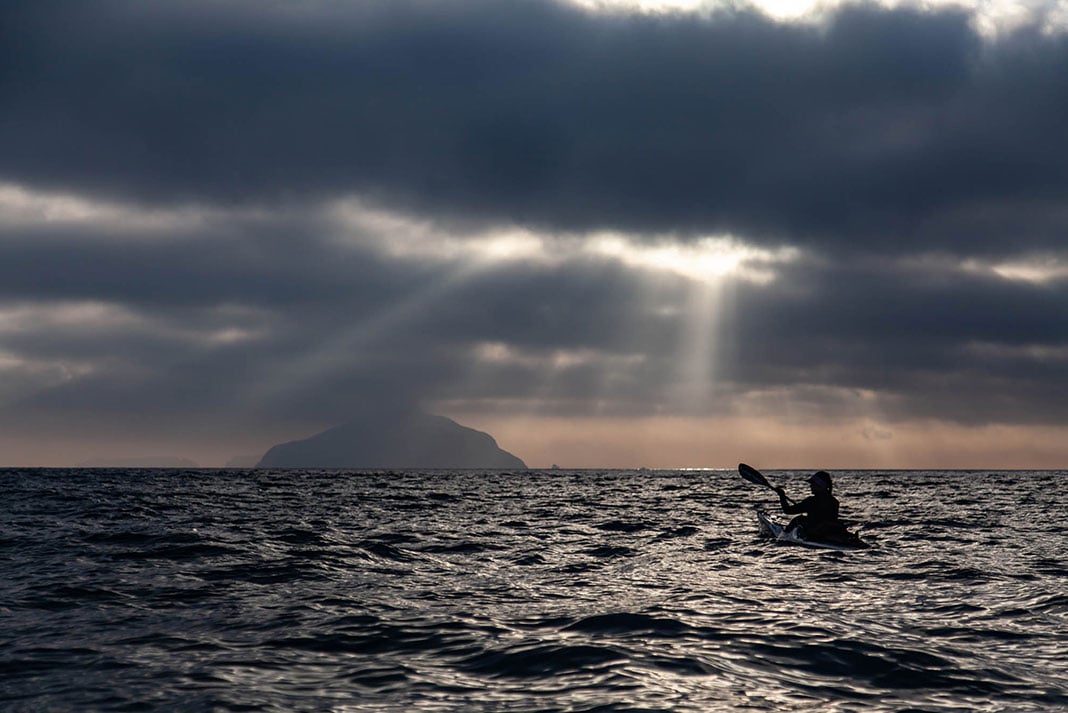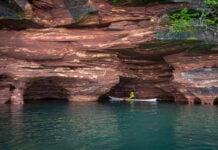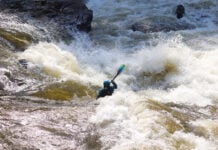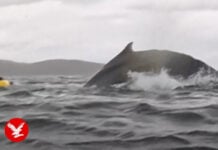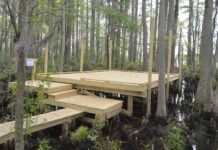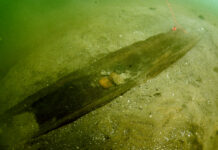On day 107 of her circumnavigation of Ireland by sea kayak, Ariel Gazarian capsized off the Irish Coast. Then, she stood back up, shook it off and finished her journey completing her circumnavigation on November 10, 2024.
“You are so vulnerable when the whole Atlantic Ocean is there next to you. You are this tiny little thing, and the whole sea is next to you, these massive cliffs, there’s nowhere to land… it’s both really humbling and really empowering,” Gazarian shared.
Circumnavigating the island of Ireland by sea kayak
A circumnavigation of Ireland can be anywhere from 900-1,300 miles depending on how many bays and coves a paddler tucks into, a marine distance phenomenon known as the coastline paradox.
Jon Hynes completed the circumnavigation 2015 and created a film about the journey that went on to win Reel Paddling Film Festival Best Sea Kayaking Film of 2017. The same film became the inspiration point for Gazarian’s own circumnavigation and Hynes himself became a mentor.
“I just didn’t stop thinking about it for so long,” shared Gazarian.
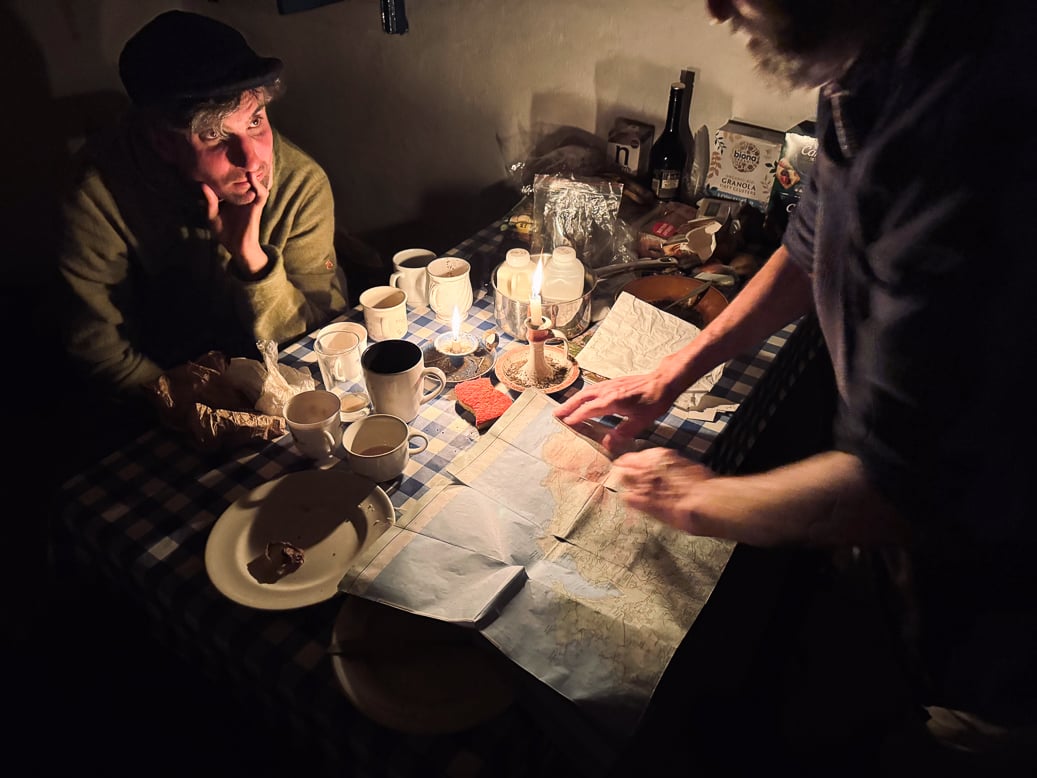
Gazarian came to the Irish coast armed with several years of experience as a sea kayaking guide in the San Juan Islands, Washington. Before heading out, she spent countless hours playing in tidal rips practicing a variety of self-rescues, or ways to get back into her kayak in rough conditions in the event of capsize.
She borrowed a Rockpool Taran 18 from Steve Smith in Ireland, another mentor pivotal to Gazarian’s trip.
“We say a circumnav here is a little like a game of chess sometimes, because you have to look at the forecast, look at what window you have,” explained Gazarian.
On June 17, Gazarian began her journey leaving from Bullock Harbour, Dublin.
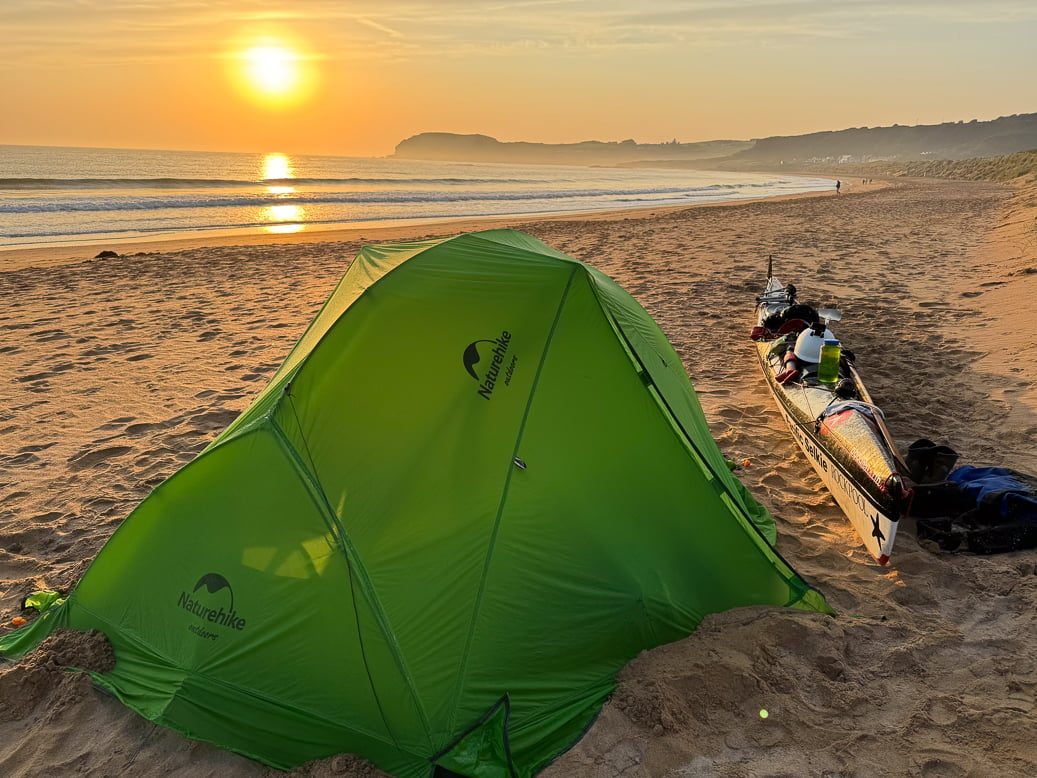
I had a wonderful rest this morning with the crashing waves and beautiful heat of the sun to wake me. I zipped open my tent and saw the most beautiful white sand and morning light glimmering within the blue crest of crashing waves. In this lighting of the sea, you can also see the silhouettes of seals swimming close to shore. Day 44, Ariel Gazarian’s expedition blog
Gazarian went on to paddle remote Irish caves and camp on sandy beaches. On July 8, she met up with Jon Hynes to paddle Old Head of Kinsale. Gazarian paddled under the Cliffs of Moher on a sunny day with dynamic seas, joined by paddlers from County Clare. Crossing Donegal Bay, she was joined by a pod of nearly 30 dolphins.
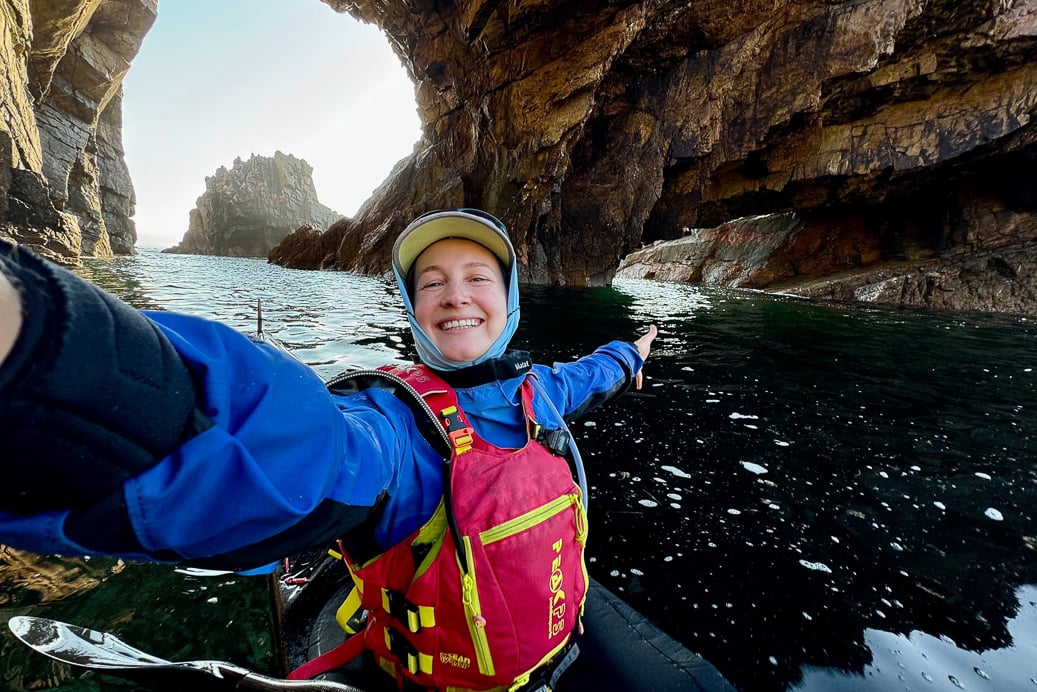
There were two big arches to go through and the sunset glow was shining bright through them, beaming towards me. What an incredible sight. The bigger one had a sea stack behind it, so it just made for a stunning view all together. Today was totally a day of – this is why I wanted to paddle around Ireland! Ah just amazing. Once I had floated and taken a happy selfie, I started my flat calm sunset crossing to Inishkeel Island. It was just wonderful. Day 99, Ariel Gazarian’s expedition blog.
Sciatica, shoulder pain, tick bites, cyst rupture, capsize
As locals consistently joked with Gazarian, summer of 2024 turned out to be the windiest summer on record since 1982 on the Irish Coast. Still, Gazarian punched through surf and swell, through sea caves and around headlands with a smile on her face.
Beyond sunshine and sea caves, Gazarian worked through sciatica, shoulder pain, tick bites, and a cyst rupture. Her journey totaled 123 days with 68 days on the water due to weather, particularly near the end of the trip, and wear and tear on her body.
On day 107, September 26, after three full months of successful paddling, Gazarian began to round Dowpatrick Head.
Past Ballycastle and well offshore, Gazarian initially planned to paddle eight more miles that day, but something shifted.
“Sometimes I get this sixth sense when I’m out there, like I should not be out here, and I need to find an exit plan,” Gazarian said.
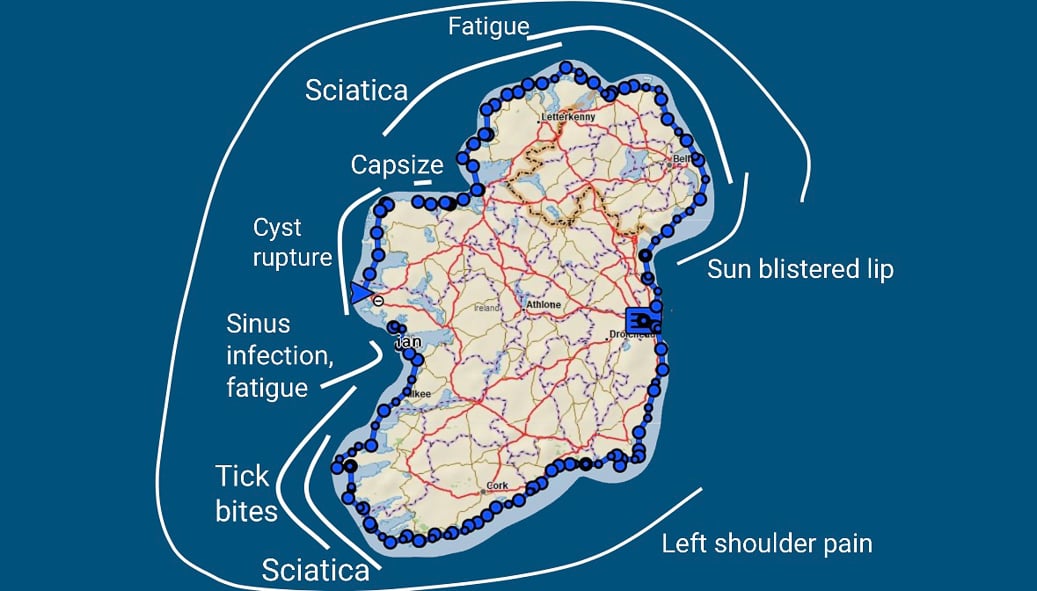
So Gazarian turned back to head for the bay rather than continue on, sensing that the sea was going to build. She did her best to maintain a distance of about a quarter mile off shore, but where before the wind was at her back, it was now at her face and from offshore, pushing her towards the cliffs.
Gazarian noted that waves were breaking a little farther offshore than usual, but not necessarily alarmingly so. Everything seemed normal; that’s when she saw the first wave. Gazarian realized she was “caught in between the boomers on shore and a massive set of off shore ‘freak wave’ boomers on a different reef with nowhere to go,” she wrote in a blog post about the event.
“I see this image in my head of these waves sucking me down and coming up, that feeling of the height of this wave is impossible… this is not supposed to happen. I couldn’t do anything about it, it was too late.”
In all of her years of experience and practice, Gazarian had never truly capsized outside of a controlled practice environment before. She had spent months with local paddlers marking down the areas with boomer waves and trouble spots; this hadn’t been one of them.
On day 107 of her Ireland circumnavigation, Gazarian was pulled under and ripped out of her boat by the force of a wave.
“The whole barrel of the wave, trough to crest, rose to about 15 feet before hitting me,” Gazarian explained. “I was pushed fast in the circulation of the wave, tumbled under in the surf like a washing machine and was ripped out of my boat, no chance to roll.”
From here, Gazarian did her best to hold her boat while a set of large boomer waves tumbled her further in towards a reef and breaking surf—a reef that had only barely been noted on her chart.
Later, Gazarian would find from locals that the nearby reef has a name in reputation— the name in Irish translates to “the rising serpent.”
What happens after a bad capsize on the open coast
By the time Gazarian was out of the pounding boomers and in a position to try and reenter her boat between sets, she’d already been exhausted from holding on to her boat and being worked by the Rising Serpent for several minutes.
She was on her sixth or seventh self-rescue attempt when another large wave came and ripped her boat from her.
“I briefly thought I was going to drown because I had so much water in my system after the first couple. I was watching my boat get surfed toward the rocks,” Gazarian said.
Thankfully, soon after that Gazarian was out of the cliff section and had drifted toward somewhat friendlier rock features. Eventually, she made her way back to her boat and slowly made her way toward some flat rocks nearby.
“You know in the movies where there’s a plane crash, and they get washed up on a beach? And they’re like, flat on the sand? I know what that’s like,” Gazarian said.
Her spray deck had been turned completely backwards, but there was no serious damage to either her or the boat.
Despite fears and self-doubt, Gazarian continues and completes her circumnavigation.
And so Gazarian got up off the sand. She paced around on the rocks and collected herself. She texted her friend Donal for help, and Gazarian took the next day off to regroup.
Just one day though— Gazarian got back on the water the day following despite fears and doubts.
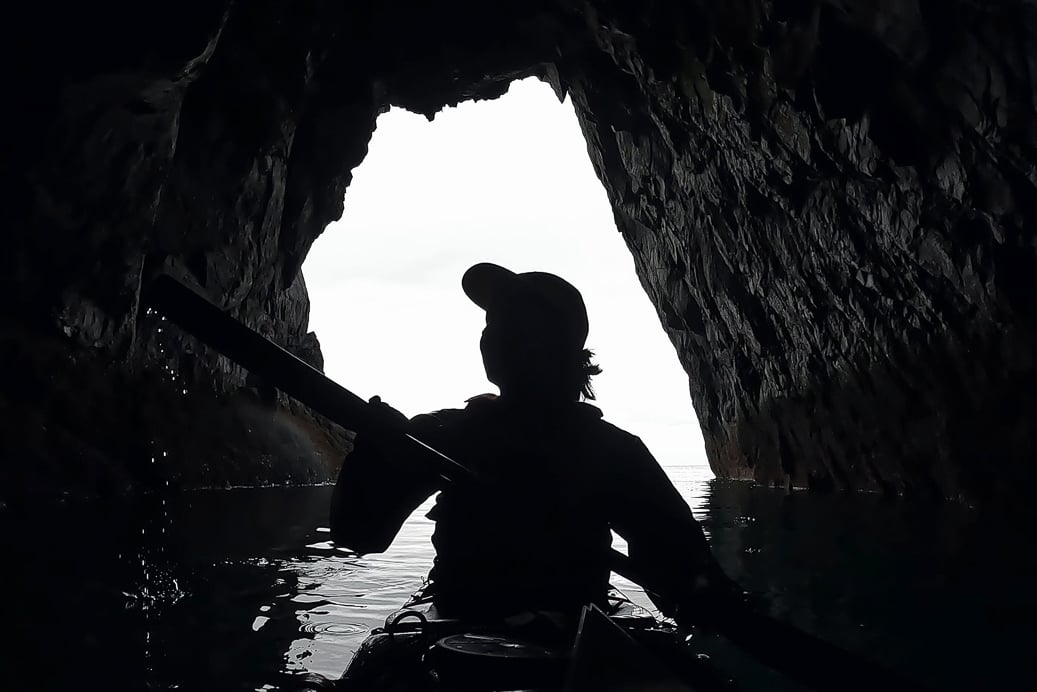
“The days after that were really hard. I just felt so different. I felt like I was just a different paddler,” Gazarian said.
Looking back, one thing Gazarian has considered extensively was whether or not she should’ve clipped on her short tow, tethering herself to the boat. She weighed whether being tethered to her boat was safer, or if adding an extra rope in conditions like that was just something for her to get tangled in, ultimately adding more risk.
“I think about it all over and over and it just feels like a miracle that I had no wrist injuries, no holes in the boat, coughed up all the water, made it to a flat place on shore near a road, got all my stuff back, and that Donal was there,” Gazarian wrote in a blog post about the event. “It turned out as the best-case scenario, really.”
After the incident, Gazarian went back to tackle the section of the capsize west of Downpatrick Head to close the loop.
“Finally, after weeks of high wind and swell storms, and waves of 20+ feet, a high pressure has come through, and I was able to finish that section of North Mayo that felt so important to do,” Gazarian wrote on Instagram on November 7. “I paddled out and around the reef that I capsized over and just felt so much relief and accomplishment to do it confidently and after the 25 miles of gorgeous cliffs, sea stacks, and the Stags of Broadhaven.”
“Going around it, I was on edge, but I think of risk management a little bit differently now,” Gazarian explained. “I separate things into ‘this is a normal amount of swell, this is not that surge that I saw coming towards me. This one freak thing that I saw… that was abnormal.’ I feel a lot better after doing it now.”
The wave was outside of her control: Gazarian decided to focus on what was within her control.
Overall, Gazarian paddled with dolphins and camped on beaches, made friends and experienced some of the wildest coast the Atlantic has to offer. She had sun blisters and shoulder pain, had a cyst rupture, and capsized and kept going anyway, even when she doubted herself, even when she was scared.
On November 10, Gazarian paddled into Bullock Harbor in Dublin, the same place she had left months before, greeted with a bouquet of flowers, a pint of Guinness, and a crowd of her friends and mentors who helped her along the way, all there to cheer her back home.
Read Ariel Gazarian’s blog posts from the trip here.




